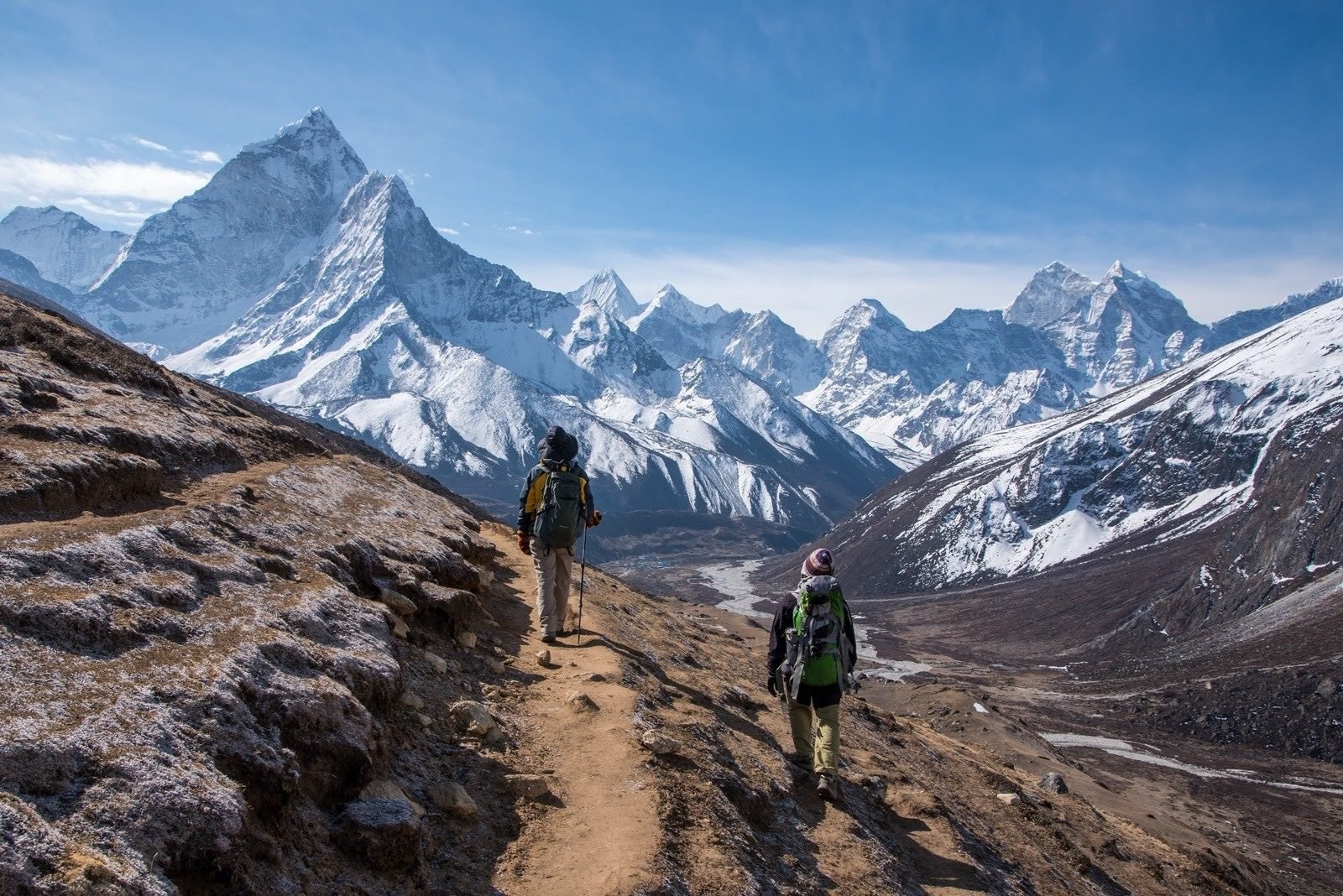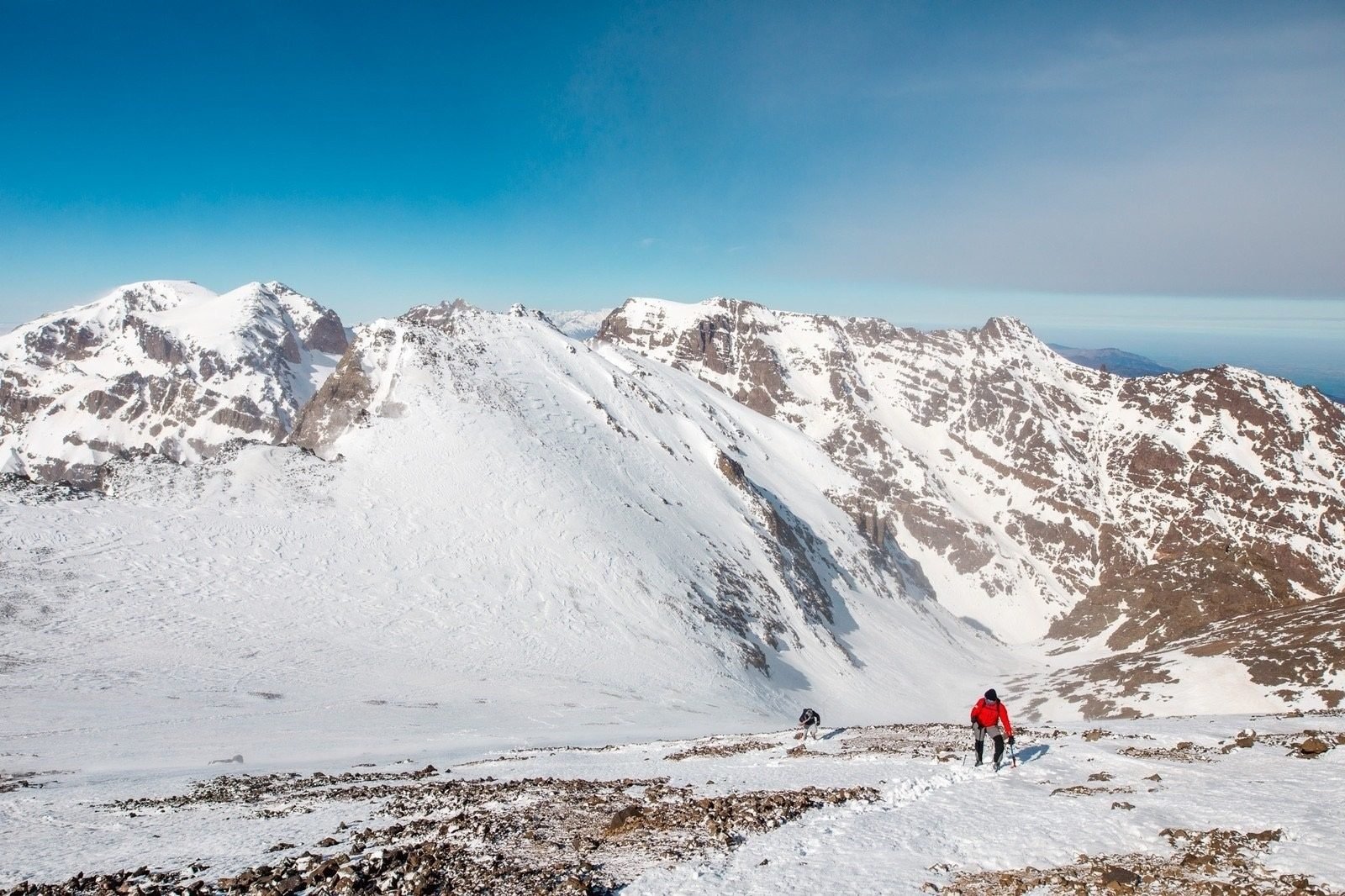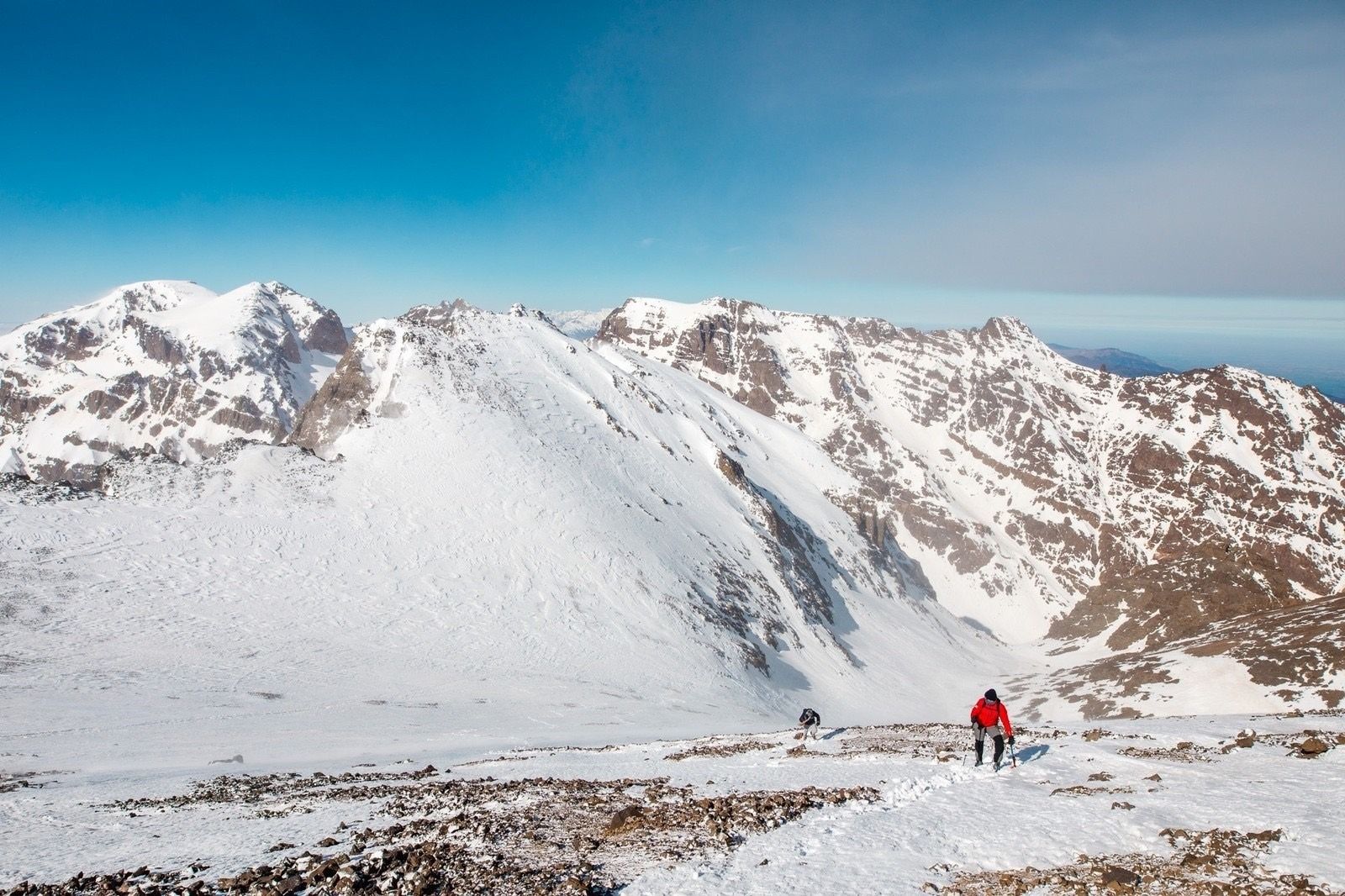
Anyone who’s ever climbed or trekked at high elevations will be well aware of altitude sickness. You may even have already been affected by it. But what exactly is it, and why does it happen?
Doctor and expedition leader, Jane Wilson-Howarth, explains what you need to know before beginning your next ascent.
If ignored, altitude sickness can make people very poorly and in extreme cases can even be deadly. It is always good therefore to consider escape routes in case anyone in your group becomes ill. Descent of just a few hundred metres can be life-saving.
Anyone can be affected regardless of age, sex or levels of fitness and just because you weren’t ill on previous ascents doesn’t mean you won’t be struck next time. A quarter of trekkers will experience some symptoms as low as 2500 m and most people will notice the effects of altitude at 3000 m. Go high enough and inevitably everyone will experience symptoms.
What are the symptoms of altitude illness?
- Breathlessness
- Headache
- Fatigue
- Poor appetite and/or nausea
- Dizziness and/or lightheadedness
- Insomnia and sometimes suffocation nightmares
- Periodic aka Cheyne-Stokes breathing
What are the danger signs?*
- Confusion or disorientation
- Strange behaviour
- Stumbling, balance problems
- Drowsiness; difficult to wake up
- Breathlessness at rest
- Coughing up frothy or bloody spit
*Any of these and you must evacuate to a lower altitude immediately.
The science
Acute Mountain Sickness (AMS), High Altitude Pulmonary Oedema (HAPE) and High Altitude Cerebral Oedema (HACE), are the medical terms to describe the three forms of altitude illness. Rather than focussing on these classifications though it is best to understand what happens to the body at altitude: the physiology is complex.
Thin mountain air means fewer oxygen molecules but interestingly the body’s drive to breathe is controlled not by oxygen lack but excess CO2. Increased CO2 in the blood makes it more acidic which stimulates rapid breathing but at high altitude more CO2 molecules are needed to push breathing rates up to the levels needed by the body. The drive to breathe is especially low during sleep which is why AMS can be particularly bad at night.
Alkaline blood in mountain illnesses has a dramatic effect throughout the body. It allows fluid to leak into the lungs and the brain hence the symptoms of coughing, headaches, and sometimes confusion. The output of the heart is also reduced so people feel breathless and fatigued. Appetite is often diminished, or there is nausea, at a time when the body should be hungry for calories.
How high, and how fast?
The standard advice of taking several days to reach 3000m then ascending no more than 300m a day, and taking regular rest days is a useful guide but some people become unwell even if they adhere to this advice.
Those with common colds are more likely to become ill, for example, and a few individuals are especially susceptible to thin air.
High altitude illnesses are unpredictable. It is important to slow the rate of ascent or stop and rest, or even descend if someone is struggling. It can make people belligerent and uncooperative and climbing buddies must watch each other for early signs.
A surprising number of people head into the mountains having done insufficient fitness and conditioning training so some may struggle simply because of poor preparation.
Many are hit by Delhi Belly, the Kathmandu Quickstep or Montezuma’s Revenge and may be debilitated by the squits and associated dehydration. Some will simply not drink enough – dehydration also causes headaches and fatigue so can contribute to AMS.
Trekkers and mountaineers should drink enough to produce an absolute minimum of three good-volume wees in 24 hours. Taking hot-lemon and soup in tea-houses makes a welcome change to water, indeed Sherpas claim that garlic soup helps protect against mountain sickness.

The cure?
Altitude illnesses – especially if combined with exhaustion and/or hypothermia – can come on rapidly and have the potential to kill, so it’s crucial to be mindful of early symptoms and to watch for deterioration. The only cure is descent. It is important to keep in mind that things often are at their worst in the middle of the night so rather than end up staggering down a narrow path with a confused or very breathless mate, err on the side of caution.
Do pills help?
Diamox or Acetazolamide tablets help the symptoms of AMS by acidifying the blood, increasing breathing and thus speeding acclimatisation. They can be taken as 250mg each morning for five days, starting two or three days before ascending. Alternatively, if symptoms start to become troublesome, 750mg (for someone under 70kg) or 1000mg (for heavier adults) are taken all at once. They make you pee more. Diamox can be bought cheaply over the counter in Nepal but it isn’t an alternative to sensible rates of ascent and isn’t completely protective.
A note about travel insurance.
As with any adventure, accidents and falls are common so before setting out make sure you arrange ample insurance, covering helicopter rescue if needed. Many ordinary travel insurers don’t cover health problems over a stated altitude so always look at the small print.
Jane Wilson-Howarth is a medical doctor who has led expeditions to the Andes, Himalayas and Madagascar. She’s done a dozen treks in Nepal with children from the age of three months and has written nine books including How to Shit Around the World. She currently lives in Nepal.

